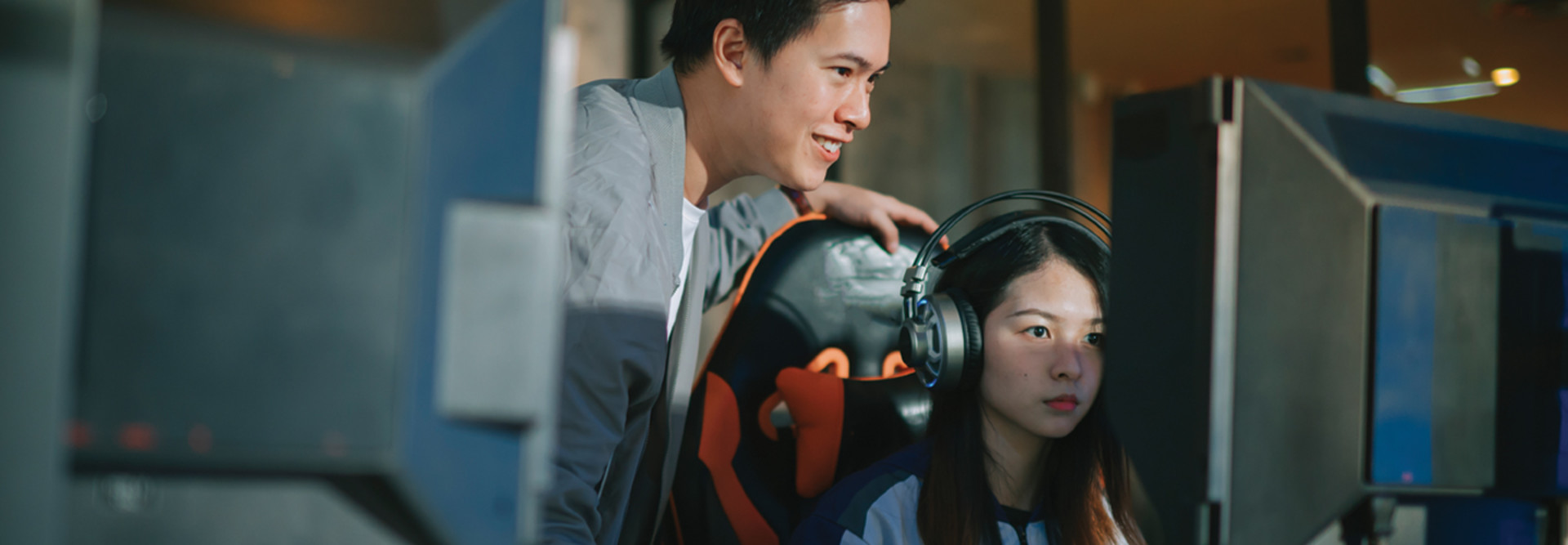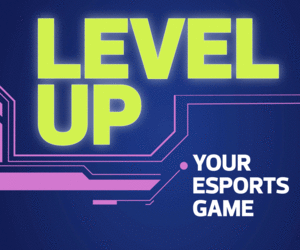“April called and said, ‘You need to start up esports at the middle school level. Here are three Xboxes.’ She actually donated the machines,” says Eden Buergler, a media specialist and esports coach at Fort Smith Public Schools’ Darby Middle School. “This is my 24th year in education, and I’ve always been into the gamification of content, curriculum and assessments.”
Although the Fort Smith Public Schools program is still relatively new, Coats and Buergler are working to grow it into an inclusive space where players of any gender or background can feel welcome and flourish.
Coaches Build the Esports Pipeline Through a Growing Program
As Coats continues her fourth year of coaching esports at the high school, Buergler is in the second year of her middle school program.
“We played Rocket League again this year and a little bit of Minecraft, but we were the only school in our district with a middle school esports team,” Buergler says. She’s hoping that as esports adoption grows in local middle schools, her students will be able to compete.
She also has big goals for her own school’s program.
“I also want a lab. I’d set up an area with lights and chairs. I’ll get jerseys. I really want to have a dedicated place for esports,” she says. “Right now, our kids have to go an arena to compete.”
DIVE DEEPER: See how one K–12 district outfitted a custom-built esports room.
Buergler is already seeing a large influx of sixth grade students interested in esports, and interest at the middle school level translates to more high school players.
Programs Actively Dispel Toxicity to Encourage Player Inclusivity
In addition to her efforts to help start a program at the middle school, Coats says word of mouth is one of the best ways to get new students involved.
“Every year, it grows a little more, especially with girls trying something new. As their friends get involved, it will grow more,” she says.
Although her program skews heavily toward male participants, she has six or seven female students on her team this year.
“What I’ve learned from the girls we do have involved is that they’re afraid to come into esports because of the toxicity that’s so prevalent when they’re gaming online,” Coats says. “If you can set the tone for your program where that’s not going to be allowed, it makes them feel more comfortable to come into that environment.”
WATCH NOW: Create a successful and inclusive esports program.
Coats and Buergler both emphasize quelling toxic gaming behaviors early on in their programs. Coats explains that when the high school students start out, they’re only allowed to send “GG” — which stand for “good game” — in the chat. As they go through the program and learn more responsibility, they get more leeway to speak with other teams.
Buergler notes that, although she has dealt with some poor student behavior in the middle school program this year, creating an inclusive environment has allowed otherwise outcast students to flourish.
“One kid came to us this year, and he was a loner, and he found us. He found his people in esports,” she says. “He has gotten so much more self-confidence. He is articulate, and he’s able to really have friends.”
K–12 Esports Leads to Future Opportunities for Players
This year, Coats also has a female student in charge of her streaming team, which livestreams all of the matches and edits all of the videos. “She’s just a sophomore, but she leads that crew with no problem. We’ve created an environment where the rest of the team shows her a lot of respect because they know she’s doing a lot of work for them.”












